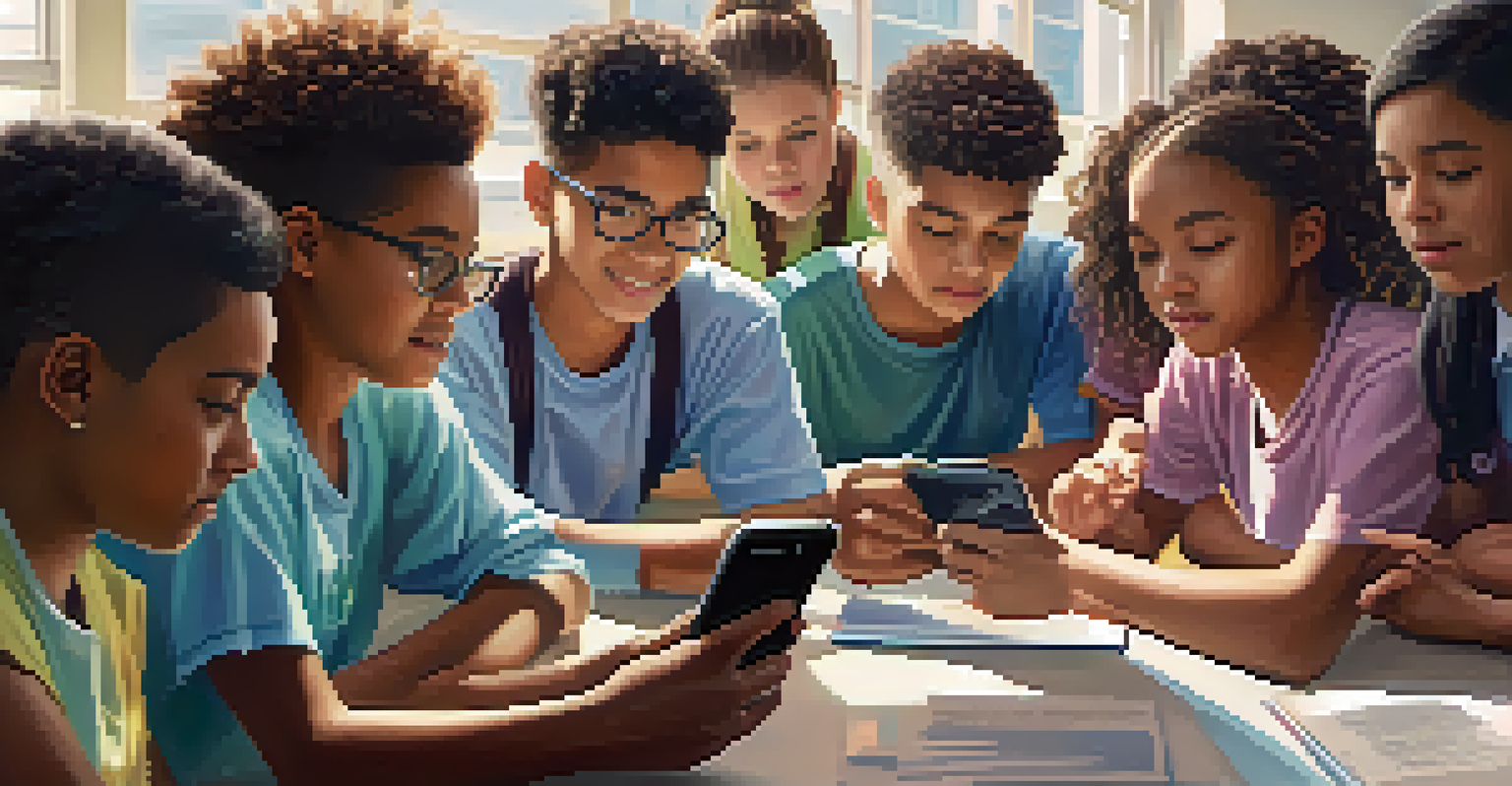Social Media's Role in Crisis Communication for Educational Institutions

Understanding Crisis Communication in Education
Crisis communication is crucial for educational institutions, especially during emergencies. It involves sharing timely information to maintain trust and safety. When a crisis occurs, clear communication can help mitigate confusion and panic among students, parents, and staff.
In the midst of chaos, there is also opportunity.
In today's digital age, social media platforms serve as powerful tools for disseminating information quickly. Schools can use platforms like Twitter and Facebook to provide real-time updates during a crisis. This immediacy helps ensure that the community remains informed and engaged.
Moreover, effective crisis communication builds a sense of confidence in the institution's ability to handle emergencies. When educational leaders communicate clearly and empathetically, it reinforces the community's trust, which is invaluable during challenging times.
The Power of Social Media in Spreading Information
Social media allows institutions to reach a larger audience swiftly. Unlike traditional methods like emails or newsletters, social media posts can go viral, spreading information far beyond the school's immediate community. This means that crucial updates can reach parents, alumni, and local media almost instantly.

For example, during a school lockdown, a quick tweet can inform everyone about the situation and provide instructions. This rapid dissemination can reduce misinformation and help maintain order. Engaging visuals and concise messages can further enhance the effectiveness of these updates.
Crisis Communication Builds Trust
Clear and empathetic communication during emergencies helps educational institutions maintain trust within their communities.
However, it's also essential for schools to manage their social media presence actively. Monitoring conversations and responding to queries can help clarify doubts and prevent the spread of rumors. This proactive approach can significantly enhance the institution's credibility during a crisis.
Building a Social Media Strategy for Crises
Creating a robust social media strategy is essential for effective crisis communication. This strategy should outline how to respond to various types of crises, including natural disasters, safety threats, or public health issues. Having a plan in place ensures that responses are timely and consistent.
The single biggest problem in communication is the illusion that it has taken place.
Training staff on this strategy is equally important. Key personnel should know how to use social media tools effectively and understand the institution's messaging tone. Regular drills can prepare the team for real-life scenarios, ensuring they act swiftly and calmly when a crisis arises.
Additionally, involving students in this strategy can add value. Students are often adept at using social media and can help disseminate information among their peers. This collaborative approach not only enhances communication but also fosters a sense of community.
Engaging the Community During a Crisis
During a crisis, engagement is crucial. Social media platforms allow educational institutions to interact with their communities in real-time. This interaction can take various forms, such as responding to comments, answering questions, and acknowledging concerns.
For instance, live Q&A sessions on platforms like Instagram or Facebook can provide clarity and reassurance. These sessions encourage open dialogue, allowing stakeholders to express their worries and receive immediate feedback. This two-way communication can greatly alleviate anxiety.
Social Media Enhances Engagement
Using social media effectively allows schools to disseminate information quickly and engage with their community in real-time.
Moreover, sharing stories of resilience or community support can foster hope. Highlighting positive actions taken by students or staff during a crisis can uplift spirits and strengthen community bonds. This human element is vital in maintaining morale.
Managing Misinformation Through Social Media
Misinformation can spread rapidly during a crisis, making it essential for schools to address it proactively. Social media can be both a blessing and a curse in this regard. While it can quickly share accurate information, it can also amplify false narratives.
To combat misinformation, institutions should post accurate updates frequently. They can also encourage community members to verify information before sharing. Providing clear sources and evidence can help establish credibility and discourage the spread of rumors.
Additionally, creating a dedicated hashtag for crisis communication can help consolidate information. This allows community members to access all relevant updates in one place, minimizing confusion and ensuring everyone is on the same page.
The Importance of Post-Crisis Communication
After a crisis, communication should not cease; rather, it should evolve. Schools must assess the situation and convey updates on recovery efforts, support services, or any changes in policies. This transparency helps the community understand the steps being taken and fosters trust.
Furthermore, gathering feedback from the community is essential. Social media can serve as a platform for surveys or discussions about the crisis response. This input can provide valuable insights for improving future crisis communication efforts.
Post-Crisis Communication is Key
Continuing communication after a crisis fosters transparency and helps the community understand recovery efforts.
Lastly, sharing stories of healing and resilience can aid in community recovery. Highlighting the positive outcomes and lessons learned can help restore a sense of normalcy and unity among students, staff, and parents.
Training Staff for Effective Crisis Communication
Training staff on effective crisis communication is vital for success. This training should cover the use of social media, the institution's communication policies, and best practices for engaging with the community. Well-prepared staff can respond more effectively when crises arise.
Role-playing scenarios during training can prepare staff for real-life situations. By simulating crises, staff can practice their responses and learn to work together under pressure. This preparation can lead to a more coordinated and effective response when it truly matters.

Moreover, ongoing training and refresher courses can keep staff updated on the latest social media trends and communication strategies. This commitment to continuous learning ensures that the team remains agile and ready to adapt to any crisis.